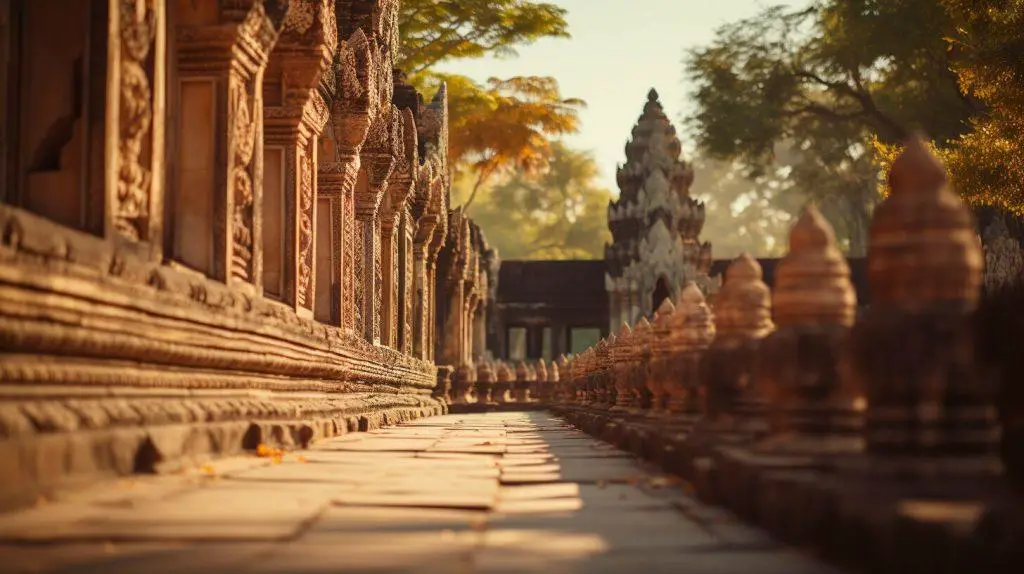Buddhism has played a crucial role in shaping Cambodian culture and society, with its influence felt across various aspects of life. From art and architecture to literature and education, Buddhism has become deeply ingrained in the nation’s identity, reflecting centuries of tradition and history.
The origins of Buddhism in Cambodia date back to the 3rd century BCE, when Indian missionaries brought the religion to Southeast Asia. Since then, Buddhism became intertwined with Cambodia’s history and traditions, and its impact remains significant today.
Throughout the centuries, Buddhism has influenced the Khmer Empire’s art and architecture, contributed to the development of education and social welfare, and served as a source of national unity and cultural pride. At present, Buddhism continues to be a cornerstone of Cambodian society, shaping the lives and values of its people.
Key Takeaways:
- Buddhism has played a significant role in shaping Cambodian culture and society.
- The religion arrived in Cambodia in the 3rd century BCE, and its influence remains widely felt today.
- Buddhism has impacted various aspects of Cambodian life, from art and architecture to literature and education.
- It has also contributed to the development of social welfare and served as a source of national identity and pride.
The Origins of Buddhism in Cambodia
Buddhism arrived in Cambodia during the third century BCE, through Indian and Chinese trade routes. At the time, Cambodia was known as the Kingdom of Funan and was deeply influenced by Indian cultures, including Hinduism and Buddhism. Over time, Buddhism became the dominant religion in Cambodia and was embraced by the Khmer Empire, which ruled the region from the 9th to the 15th century.
During the Khmer Empire, Buddhism became the state religion and played a crucial role in shaping the nation’s art, architecture, and literature. The empire’s rulers built numerous temples and shrines dedicated to Buddhism, including the famous Angkor Wat temple complex, which remains one of the largest religious monuments in the world.
The Origins of Buddhism in Cambodia
As Buddhism spread throughout Cambodia, it became integrated into the country’s culture and traditions. Cambodian Buddhism is notable for its unique blend of Theravada and Mahayana Buddhism, which incorporates elements of Hinduism and animism. This mixture of beliefs has helped shape Cambodian society and cultural identity, making Buddhism an integral part of the nation’s history and heritage.
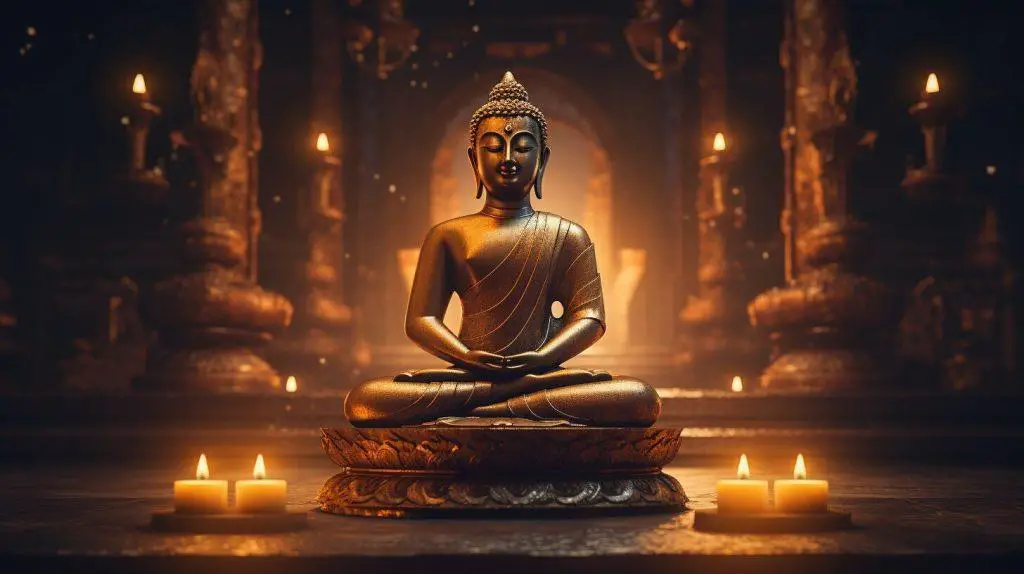
Despite facing various challenges throughout its history, such as persecution by the Khmer Rouge regime in the 1970s, Buddhism has remained a resilient and enduring force in Cambodian culture. Today, the majority of Cambodians identify as Buddhist, and the religion continues to play a vital role in shaping the country’s values, beliefs, and way of life.
Buddhism and the Khmer Empire
One of the most significant periods in Cambodian history was the Khmer Empire, which lasted from the 9th to the 15th century. During this time, Buddhism played a significant role in the culture and practices of the empire.
King Jayavarman VII, who ruled from 1181 to 1218, was a devout Buddhist and made it the state religion. He is credited with building the largest temple complex in the world, Angkor Wat, which is widely considered to be one of the greatest examples of Khmer architecture and art. The temple’s intricate carvings and reliefs depict scenes from Buddhist mythology, including the story of the Buddha’s enlightenment.
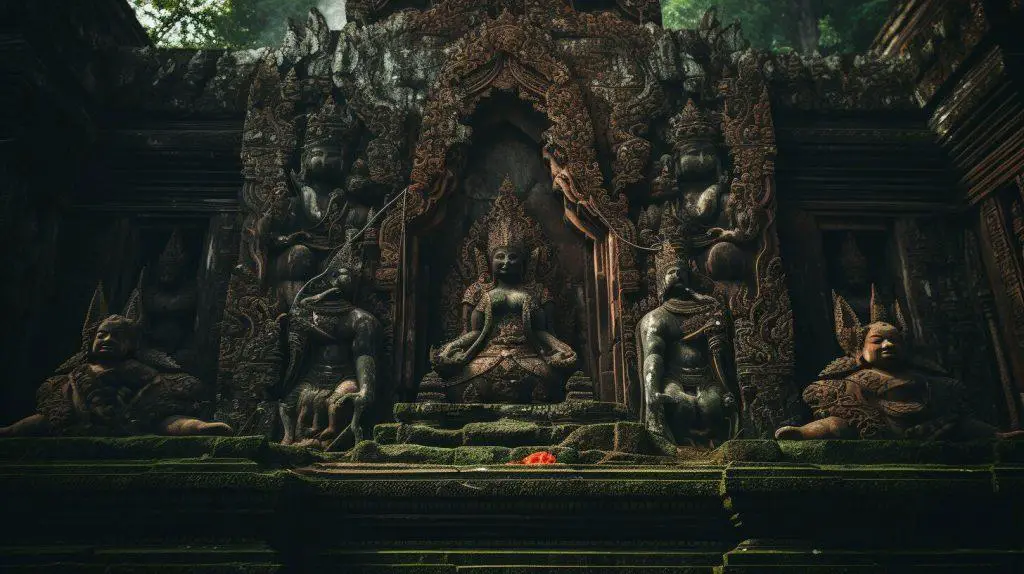 |
The Khmer Empire also established a strong monastic tradition, with hundreds of monasteries and temples spread throughout the region. Buddhist monks played a crucial role in education and social welfare, providing free education and healthcare to the local population. They were also responsible for preserving and disseminating Buddhist teachings and scriptures.
Buddhism and the Khmer Empire’s Decline
Despite its significant influence on the Khmer Empire, Buddhism was unable to prevent its decline. In the 14th and 15th centuries, the empire lost vast territories to neighboring states and eventually fell to the Siamese in 1431. Many of the Buddhist temples and monasteries were abandoned or destroyed during this period, and the practice of Buddhism in Cambodia declined.
“Buddhism’s decline in Cambodia was due to a combination of factors, including political instability, economic decline, and external pressures from neighboring states,” said Dr. Sopheap Chak, a historian of Cambodian religion.
Despite the decline of the Khmer Empire and Buddhism in Cambodia, the religion persisted, and its influence can still be seen in Cambodian culture and society today.
Buddhist Practices and Rituals in Cambodian Society
Buddhism in Cambodia is more than just a religion; it is deeply ingrained in the culture and daily life of the people. From birth to death, Cambodians follow various Buddhist practices and rituals that reflect the country’s unique blend of Theravada Buddhism and indigenous beliefs.
One of the most important practices in Cambodian Buddhism is merit-making, which involves performing good deeds and acts of generosity to accumulate karma and earn a better rebirth in the next life. This can include donating money or goods to temples, supporting monks and nuns, or providing food to the needy.
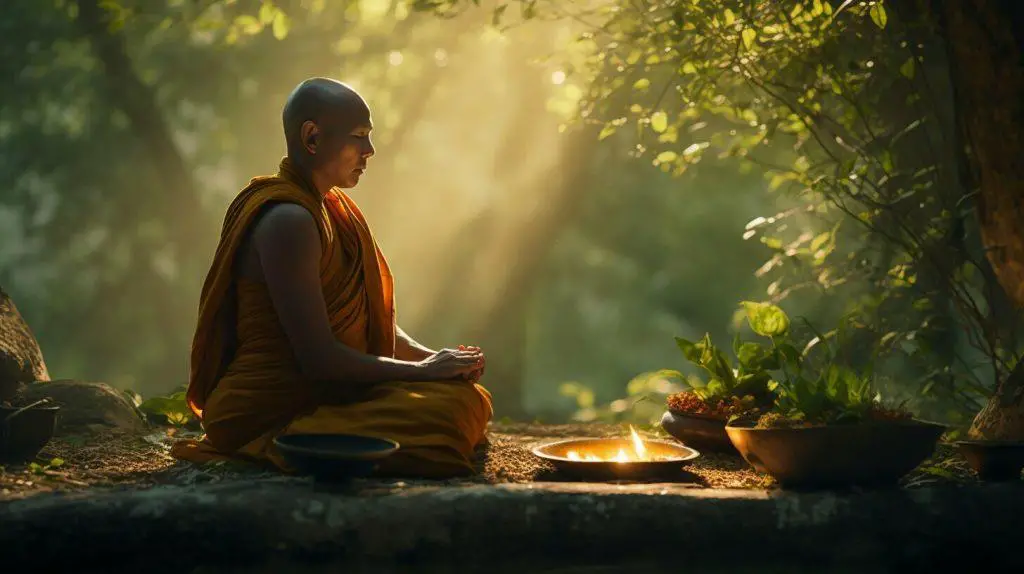
Image source: https://seowriting.ai/32_6.png
Another common practice is the offering of alms to monks at dawn. This tradition, known as Tak Bat, involves lining up in the streets to offer food and other necessities to the saffron-robed monks who walk past. This ritual not only provides sustenance for the monks but also allows laypeople to earn merit and show gratitude for the teachings of the Buddha.
Buddhist festivals also play a significant role in Cambodian society. One such festival is Pchum Ben, or Ancestor’s Day, which takes place over 15 days in September or October. During this time, Cambodians visit their ancestors’ graves and offer food and prayers to help the deceased earn a better rebirth. Monks also chant throughout the night to provide comfort for the wandering spirits.
Weddings and funerals in Cambodia also incorporate Buddhist elements. For example, at weddings, a traditional ceremony involves the tying of a Buddhist string around the wrists of the bride and groom to symbolize their union and good fortune. Funerals typically involve monks chanting to help guide the deceased to their next life and provide comfort to the grieving family.
Overall, the various Buddhist practices and rituals in Cambodian society serve not only to uphold the tenets of the religion but also to shape the cultural identity of the nation. From small acts of kindness to grand festivals and ceremonies, Buddhism remains a vital part of daily life in Cambodia.
Buddhist Monasticism in Cambodia
Buddhist monasticism has played a significant role in shaping Cambodian culture and society. Monks are highly respected figures in the community and are often looked upon for guidance and spiritual teachings.
The Buddhist monastic tradition in Cambodia dates back to the 5th century, when the religion was first introduced to the region. Monasteries were established throughout the country, and monks became important educators and scholars. They not only taught Buddhist philosophy and scripture but also subjects such as mathematics, astronomy, and medicine.
Monks in Cambodia follow a strict code of conduct known as the Vinaya, which outlines moral and ethical guidelines for monastic life. This code includes rules for dress, behavior, and the use of material possessions. Monks live a simple and ascetic lifestyle, relying on alms for their daily sustenance.
The role of monks in Cambodian society has expanded beyond spiritual guidance to include social welfare. Many monasteries provide education and healthcare services to their communities, and some even offer shelter to the homeless and destitute.
| Image of Buddhist Monks in Cambodia |
|---|
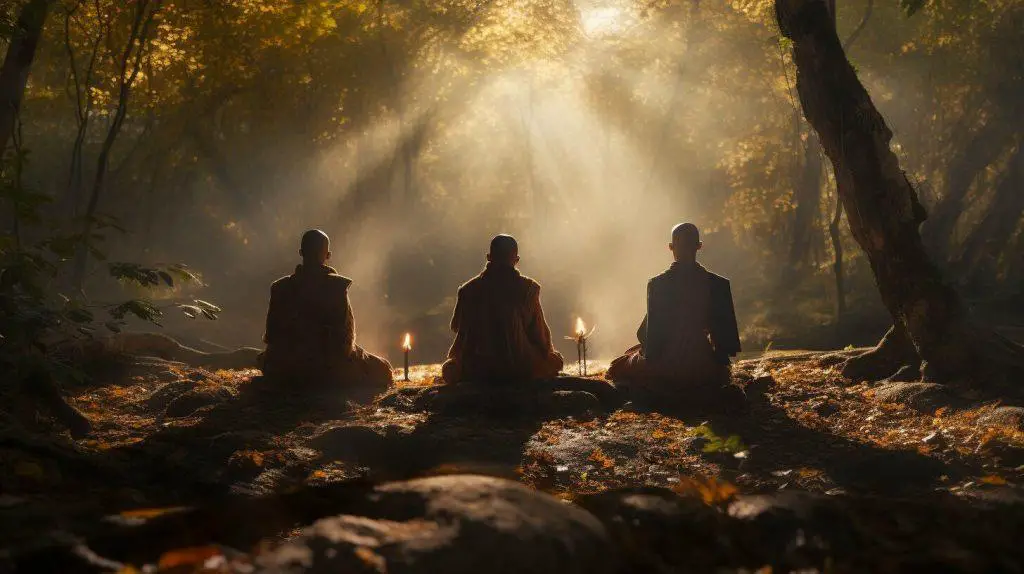 |
Buddhist monasticism has also played a significant role in preserving Cambodian cultural heritage. Monks have been instrumental in the restoration of ancient temples and artwork, as well as the preservation of traditional ceremonies and practices.
Despite challenges such as political upheaval and social change, the tradition of Buddhist monasticism remains strong in Cambodia. It continues to be a vital part of Cambodian culture, providing spiritual guidance, education, and social welfare to the community.
Buddhism and Cambodian Art and Architecture
Buddhism has had a significant influence on Cambodian art and architecture, as evidenced by the country’s many temples and sculptures. One of the most renowned examples of this is the Angkor Wat temple complex, built in the 12th century as a Hindu temple, later converted to a Buddhist temple, and now one of the most visited tourist attractions in Southeast Asia. The complex is a stunning example of Khmer architecture, with intricate carvings and detailed reliefs that portray Buddhist stories and teachings.

In addition to temples, Buddhist sculptures have also played an important role in Cambodian art. These sculptures often depict Buddha or other significant Buddhist figures, and can be found in various places throughout the country, including museums and public spaces. Many of these sculptures are made from stone or bronze and are adorned with intricate designs that reflect the artistic traditions of Cambodian culture.
Buddhism and Cambodian Architecture
One of the most prominent features of Cambodian architecture is the use of decorative motifs that are inspired by Buddhism. These motifs can be found on buildings, sculptures, and other forms of artistic expression, and often include lotus flowers, Bodhi trees, and other symbols of Buddhist significance. Additionally, Buddhist architecture often features intricate patterns and carvings that are meant to reflect the teachings of the religion.
“Buddhism has had a significant influence on Cambodian art and architecture, as evidenced by the country’s many temples and sculptures.”
Another notable aspect of Buddhist architecture in Cambodia is the use of stupa architecture. A stupa is a dome-shaped structure that is used to hold relics and other sacred objects. In Cambodia, stupas can be found in many temples and are often adorned with carvings and other decorative elements.
Buddhism and Cambodian Sculpture
Like architecture, Cambodian sculpture has been greatly influenced by Buddhism. Sculptures often depict important Buddhist figures such as Buddha, Bodhisattvas, and other deities. These sculptures can be found in various materials, including stone, bronze, and wood, and are often decorated with intricate designs and patterns that reflect the artistic traditions of Cambodian culture.
One of the most famous examples of Buddhist sculpture in Cambodia is the reclining Buddha at Angkor Thom. This massive sculpture measures over 15 meters in length and is carved out of stone. The sculpture is highly detailed and is considered one of the greatest examples of Khmer art.
Buddhist sculpture also plays an important role in Cambodian society. Many Cambodians believe that having a Buddhist sculpture in their home or workplace can bring good luck and ward off evil spirits.
Overall, Buddhism has had a profound impact on Cambodian art and architecture. The intricate patterns, designs, and motifs used throughout Cambodian artistic expression reflect the teachings and values of the religion, and have helped to shape the unique cultural identity of the nation.
Buddhism and Cambodian Literature
Buddhism has not only influenced Cambodian art and architecture, but it has also left its mark on the country’s literature. Traditional Cambodian stories and poetry often reflect Buddhist themes and teachings, showcasing the deep connection between the religion and the culture.
The Jataka Tales, a collection of stories about the Buddha’s previous lifetimes, have been widely retold and adapted in various forms of Cambodian literature. These tales emphasize the importance of compassion, selflessness, and morality, and have served as a source of inspiration for many Cambodian writers.
Buddhism has also influenced the Khmer script, which was developed in the 7th century and is still used today. The script, which was originally based on Sanskrit, was adapted to incorporate Pali and other languages used in Buddhist texts. This allowed for the translation and dissemination of important Buddhist texts, such as the Tripitaka, which were crucial in spreading the religion across Southeast Asia.
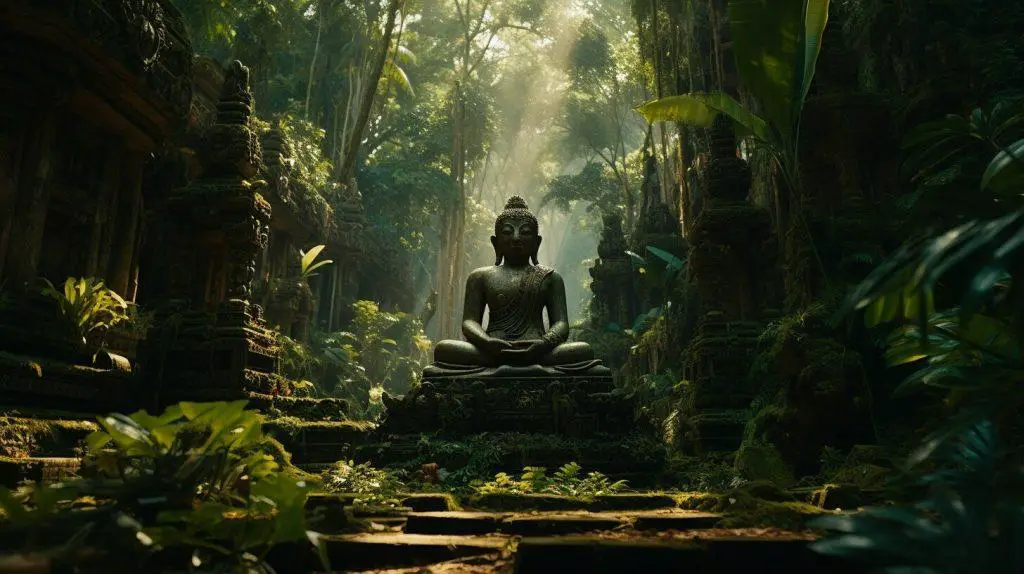
“Buddhism has not only influenced Cambodian art and architecture, but it has also left its mark on the country’s literature.”
Additionally, Cambodian literature often explores Buddhist concepts such as impermanence and karma. Many writers use their works to reflect on the challenges and complexities of life, as well as to explore the nature of existence and the human condition.
One example of a modern Cambodian writer who incorporates Buddhist elements into their work is U Sam Oeur, who is known for his poetry and essays that reflect on the impact of war and violence on Cambodian society. His works often emphasize the need for compassion and understanding in the face of hardship and suffering.
Overall, Buddhism has had a profound impact on Cambodian literature, shaping the themes, language, and spiritual underpinnings of many works. The influence of the religion is a testament to its enduring significance in Cambodian culture and society.
Buddhism and Cambodian Festivals
Buddhism has a significant influence on Cambodian festivals, reflecting the values and beliefs of the religion. One such festival is Pchum Ben, also known as Ancestor’s Day, which is celebrated in September or October. During this festival, Cambodians visit pagodas to offer food and prayers to their ancestors in order to earn merit for their loved ones in the afterlife. The festival acknowledges the role of ancestors in shaping one’s identity and reiterates the importance of filial piety.
Another major festival in Cambodia is Khmer New Year, which takes place in April and is based on the Buddhist lunar calendar. This festival marks the end of the harvest season and the beginning of a new year. It is a time for family reunions and cultural activities, such as traditional dance performances and games.
The importance of Buddhism in Cambodian festivals is reflected in the decorations and practices associated with these events. For example, during Khmer New Year, Cambodians build sand stupas that symbolize the Buddhist concept of impermanence, while during Pchum Ben, they offer rice balls called “bay ben” to their ancestors, which represents the cycle of life and death.
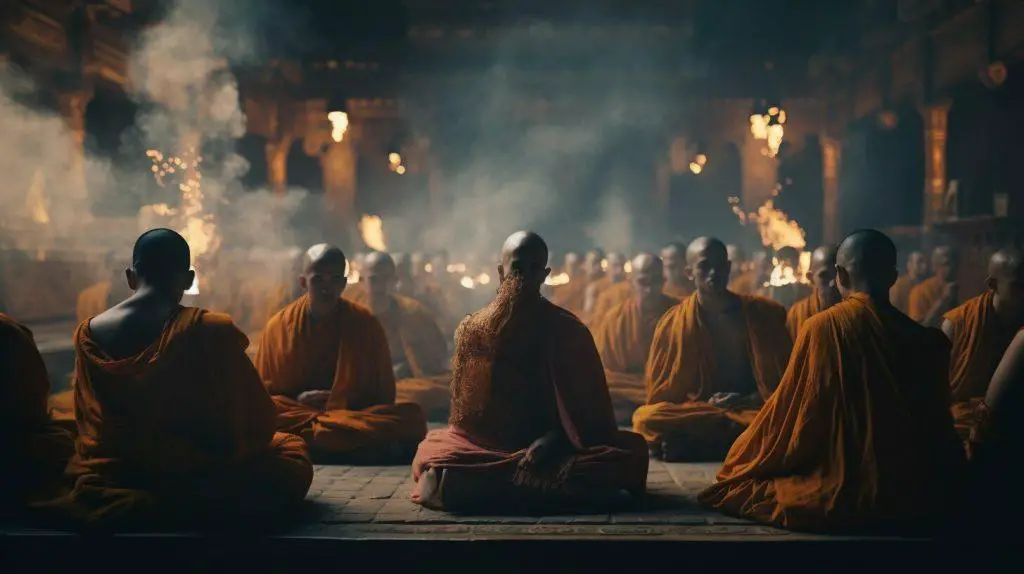
“Buddhism emphasizes the interconnectedness of all things, and this is reflected in the way Cambodians honor their ancestors and celebrate the changing of the seasons.”
Overall, Cambodian festivals are an important way for the country to celebrate its unique cultural heritage and to reinforce the values and principles of Buddhism. Through these celebrations, the Cambodian people are able to connect with their past, present, and future, and to express gratitude for all that they have been given.
Buddhism and Cambodian Education
Buddhism has had a significant impact on education in Cambodia, with the establishment of Buddhist schools and the integration of Buddhist teachings into mainstream education. Historically, Buddhist monasteries were centers of learning in Cambodia, providing education in subjects such as religion, literature, medicine, and law.
Today, there are numerous Buddhist schools throughout the country that offer education to disadvantaged children and young adults. These schools are often run by monks and provide a holistic approach to education, emphasizing both academic and moral teachings.
One example of this is the Soksabike program in Battambang, which offers tours led by local students who have been trained in English, business, and hospitality skills. The program provides opportunities for students to gain practical experience and develop their skills, while also promoting sustainable tourism in the area.
Buddhist Monks and Education
Buddhist monks also play a significant role in education in Cambodia, with many serving as teachers and mentors to young people. In addition to providing education within monasteries, monks also run outreach programs that provide educational opportunities to children from disadvantaged backgrounds.
Monks also emphasize the importance of moral teachings in education, promoting values such as compassion, generosity, and respect for others. This focus on character development has helped to shape the educational landscape in Cambodia, with many schools incorporating these teachings into their curriculum.
The Challenges of Education in Cambodia
Despite the efforts of Buddhist educators and institutions, Cambodia still faces significant challenges in the realm of education. According to UNESCO, the literacy rate in Cambodia is only around 77%, and many children are unable to attend school due to poverty or other factors.
Buddhist organizations have responded to these challenges by providing support to students in need, such as through scholarships and food programs. These initiatives help to ensure that all children have access to education and that they are able to thrive academically and personally.
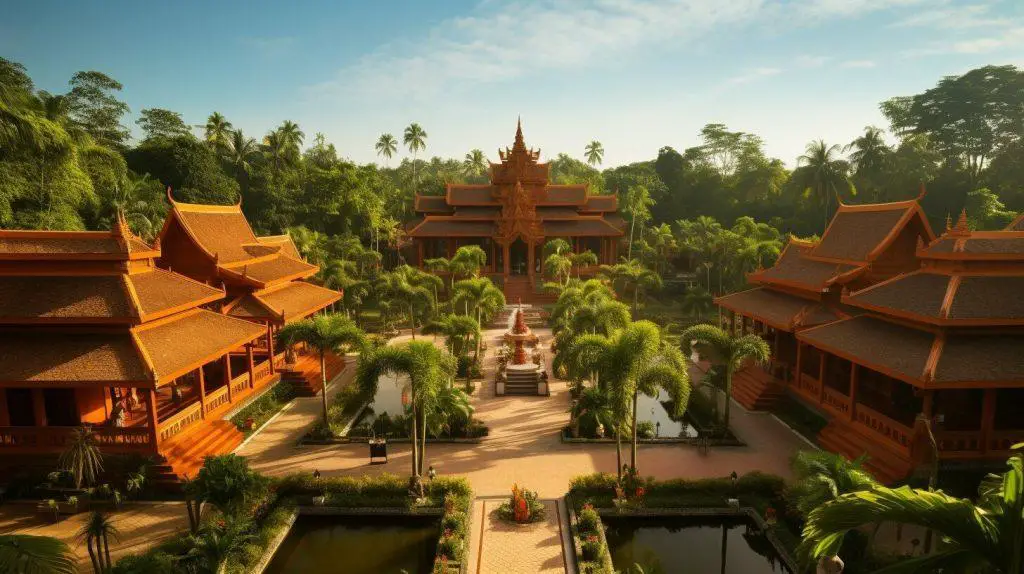
“Education is the key to unlocking the world, a passport to freedom” – Oprah Winfrey
Buddhism and Cambodian Social Welfare
Buddhism plays a significant role in promoting social welfare in Cambodia. Many Buddhist charitable organizations provide healthcare, food, and shelter to those in need.
One such organization is the Tzu Chi Foundation, which operates in numerous countries, including Cambodia. The foundation’s principles are based on Buddhism and the belief in compassion and altruism. In Cambodia, the foundation provides aid to vulnerable communities, including victims of natural disasters and impoverished families.
In addition to providing aid, Buddhist temples in Cambodia also serve as centers of community support. The temples offer free education and vocational training to disadvantaged youth and adults. Monks also provide counseling and support to those struggling with addiction or mental health issues.
Buddhism’s emphasis on compassion and generosity has helped to foster a culture of giving in Cambodia, with many individuals and organizations donating to support those in need. This spirit of giving is particularly evident during Buddhist festivals, such as Pchum Ben, during which Cambodians make offerings to their ancestors and donate to charitable causes.
Overall, Buddhism’s focus on social welfare and compassion has had a positive impact on Cambodian society, promoting a sense of community and encouraging support for the most vulnerable members of society.
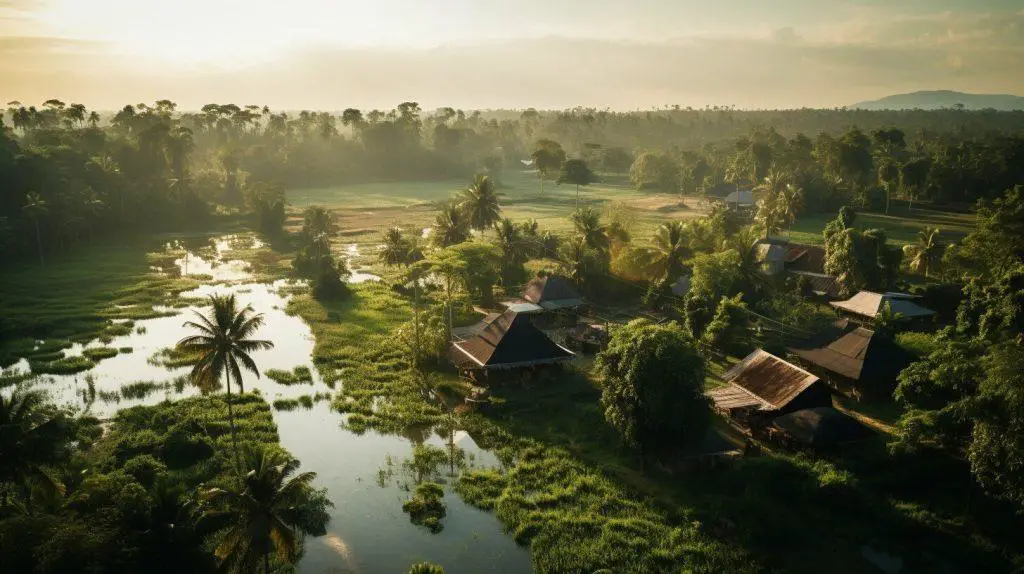
Buddhism and Cambodian Values
Buddhism has played a significant role in shaping the values of Cambodian society. One of the core teachings of Buddhism is compassion, which is reflected in the Cambodian value of “preah neang chhéng preah neang doung chhéng doung,” meaning “ladies in front, gentlemen behind.” This value emphasizes the importance of putting others before oneself and treating everyone with respect, regardless of their gender or social status.
Mindfulness is another important value promoted by Buddhism, which is reflected in the Cambodian tradition of “sampeah.” This is a gesture of respect that involves placing one’s hands together in front of the chest and bowing the head. It is a way of showing appreciation, gratitude, and reverence.
Respect for elders is also a crucial value in Cambodian society, which has its roots in Buddhist teachings. Buddhism emphasizes the importance of showing reverence and gratitude towards one’s parents and elders, and this value is reflected in the Cambodian tradition of “pouring tea,” which involves serving tea as a sign of respect to one’s elders.
Other values promoted by Buddhism include humility, selflessness, and patience. These values are reflected in Cambodian society through the emphasis on community and the importance of working together for the common good. For example, the Cambodian tradition of “bay ben” involves coming together as a community to help build a house or temple, without expecting anything in return.
Overall, Buddhism has had a profound impact on the values and culture of Cambodia, emphasizing the importance of compassion, mindfulness, and respect for others. These values continue to shape Cambodian society today, inspiring people to work together for the common good and to uphold the traditions and teachings of Buddhism.
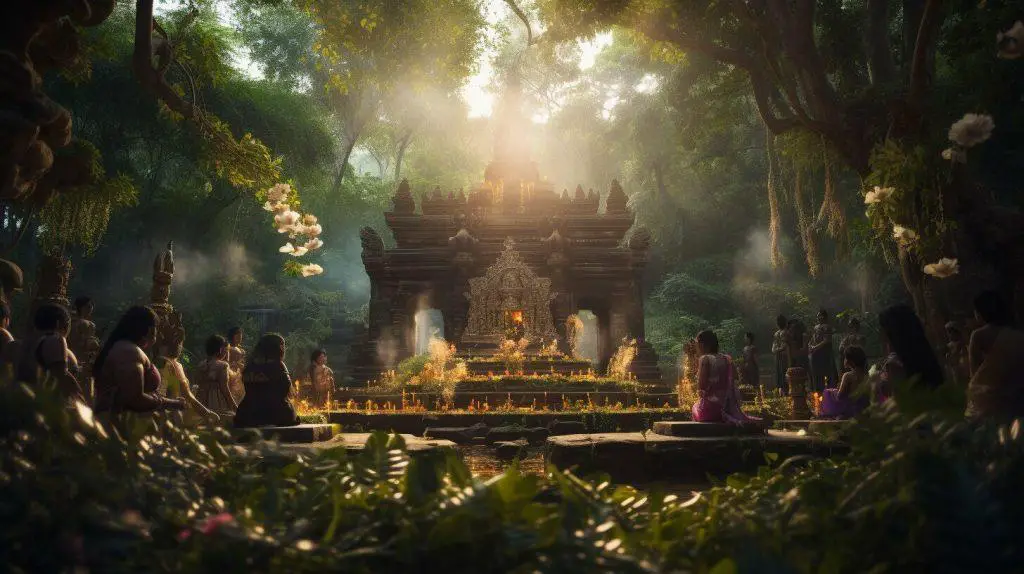
Buddhism’s Resilience in Cambodian History
Buddhism has faced numerous challenges throughout Cambodian history, including periods of conflict, cultural change, and political upheaval. Despite these challenges, Buddhism has remained an integral part of Cambodian culture and society.
One significant challenge to Buddhism in Cambodia was the rise of communism in the 20th century. The Khmer Rouge regime, which ruled Cambodia from 1975 to 1979, sought to eradicate all forms of religion, including Buddhism. Monks were targeted for their perceived political influence, and many were executed or forced to disrobe.
However, even in the face of such brutal repression, Buddhism persisted in Cambodia. After the fall of the Khmer Rouge, many monks returned to their monasteries and helped to rebuild the Buddhist community. Today, Cambodia has over 4,000 active temples and more than 50,000 monks.
Buddhism’s resilience in Cambodian history can also be seen in the country’s cultural artifacts. Despite attempts to destroy Buddhist art and architecture during the Khmer Rouge era, many ancient temples and sculptures have survived and continue to attract visitors from around the world. The Angkor Wat temple complex, for example, is one of the most iconic symbols of Cambodia and a testament to Buddhism’s enduring influence.
Even as Cambodia continues to modernize and evolve, Buddhism remains a central part of the country’s cultural identity. As the nation looks to the future, it is likely that Buddhism will continue to play a vital role in shaping the values and beliefs of its people.
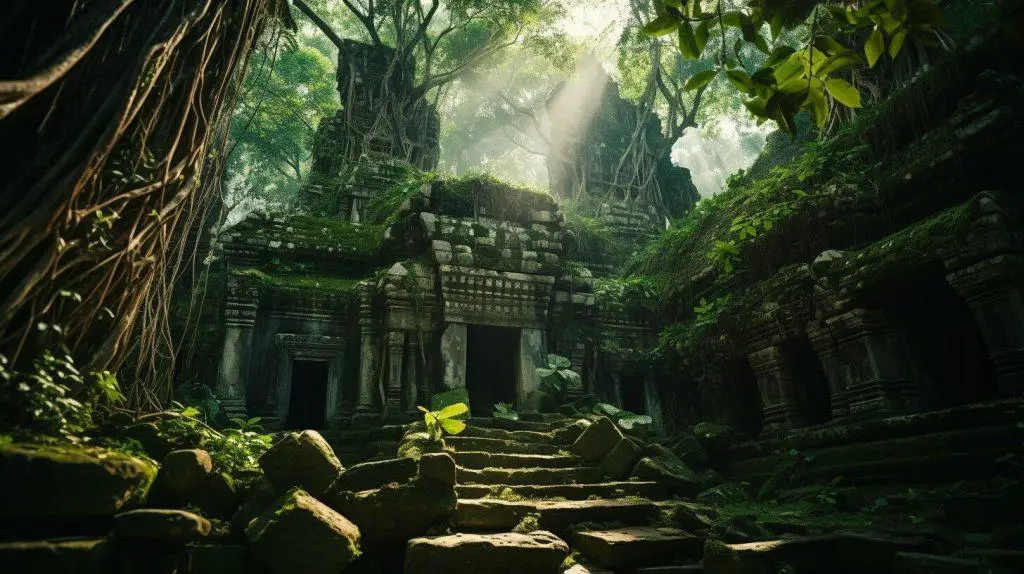
Buddhism and Cambodian Identity
Buddhism has played a significant role in shaping the identity and culture of the Cambodian people. It has been a unifying force throughout the nation’s history, providing a shared set of beliefs and values that have contributed to a sense of national pride and identity.
The Buddhist teachings of compassion, mindfulness, and respect for all living beings have become deeply ingrained in Cambodian society. These values are reflected in the way that Cambodians interact with each other, as well as in their attitudes towards the environment and the natural world.
Furthermore, Buddhism has provided Cambodians with a sense of resilience and endurance in the face of adversity. Throughout the country’s history, including during the Khmer Rouge regime, Buddhism has offered a source of strength and hope to the people, helping them to rebuild their lives and communities in the aftermath of conflict and hardship.
In many ways, Buddhism has become synonymous with Cambodian identity, and the two have become inseparable. As the country continues to evolve and modernize, it is likely that Buddhism will continue to play a significant role in shaping the nation’s cultural identity for many years to come.
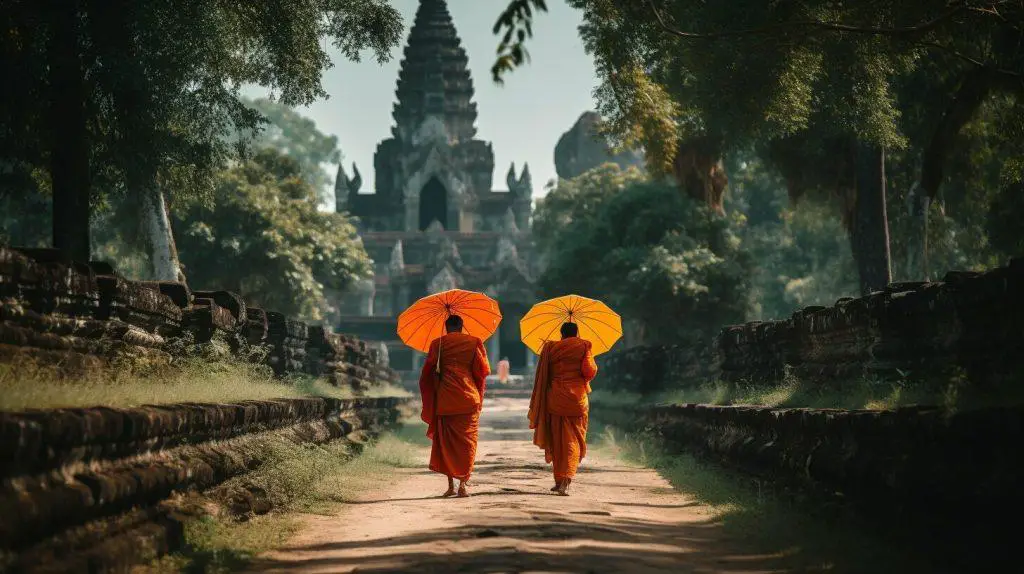
Buddhist monks with umbrellas during a ceremony in Cambodia. Image source: https://seowriting.ai/32_6.png
Buddhism’s Role in Modern Cambodian Society
Buddhism remains a cornerstone of Cambodian society, with an estimated 97% of the population following the religion. While the country has undergone significant modernization and globalization, the teachings and practices of Buddhism continue to play an important role in shaping the lives and values of the people.
One area where Buddhism has remained particularly relevant is in the realm of social welfare. Buddhist charities and organizations provide crucial support to vulnerable populations, including the poor, the sick, and the elderly. Buddhist monks are also deeply involved in community outreach and education initiatives, helping to promote awareness and understanding of important social issues.
At the same time, Buddhism has also adapted to modern circumstances. Some Buddhist temples have embraced social media and other digital platforms to reach a wider audience and connect with followers around the world. The use of technology has also helped to streamline certain Buddhist practices and rituals, making them more accessible and convenient for modern practitioners.
However, there are also concerns about the potential impact of increased globalization and commercialization on the practice of Buddhism in Cambodia. Some worry that the commodification of religious practices and artifacts could dilute the spiritual significance of Buddhism and undermine its cultural importance.
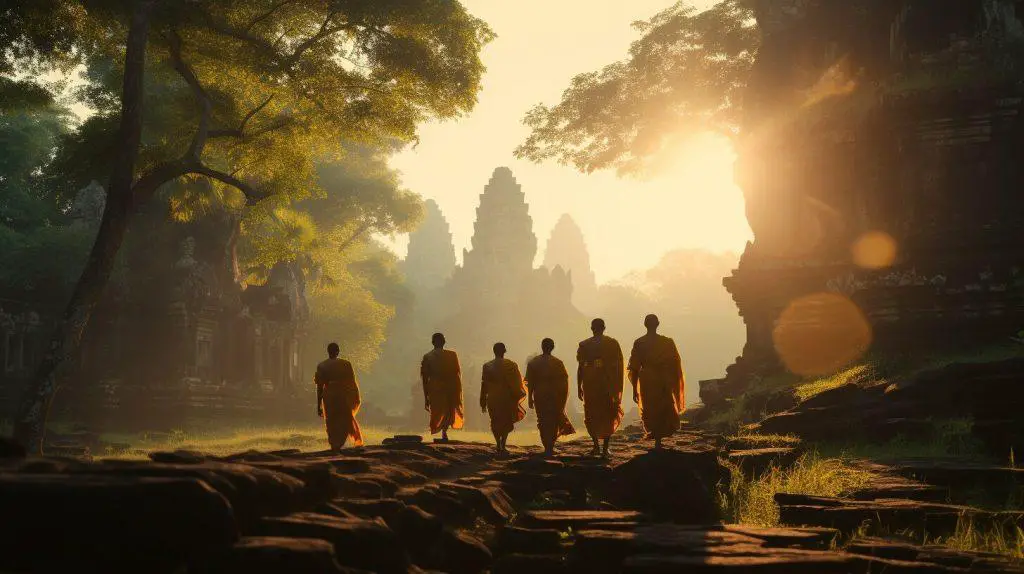
Nonetheless, the resilience of Buddhism in Cambodia suggests that it will continue to play a central role in shaping the country’s culture and values for generations to come. As Cambodia navigates the complexities of the 21st century, the enduring teachings and traditions of Buddhism offer a source of stability and guidance.
Buddhism’s Future in Cambodian Culture
Buddhism has been a cornerstone of Cambodian culture and society for centuries, but as the nation continues to modernize and globalize, the role of Buddhism may evolve and adapt to changing societal needs and beliefs.
One potential future for Buddhism in Cambodia lies in its ability to promote environmental awareness and sustainability. As the nation faces increasing environmental challenges, such as deforestation and climate change, Buddhism’s emphasis on interdependence and interconnectedness may provide a framework for promoting environmental stewardship and inspiring action towards a more sustainable future.
Another possibility is the continued integration of Buddhism with technology and social media. With the rise of digital communication, there is an opportunity for Buddhism to reach a wider audience and connect with younger generations in new ways. The use of meditation apps and online teachings may become more common, allowing Buddhism to adapt to the modern landscape while still maintaining its core values and teachings.
Despite these potential developments, it is important to note that Buddhism’s role in Cambodian culture is deeply ingrained and resilient. As the nation continues to navigate its complex history and cultural identity, Buddhism will likely remain a central and enduring aspect of Cambodian life.
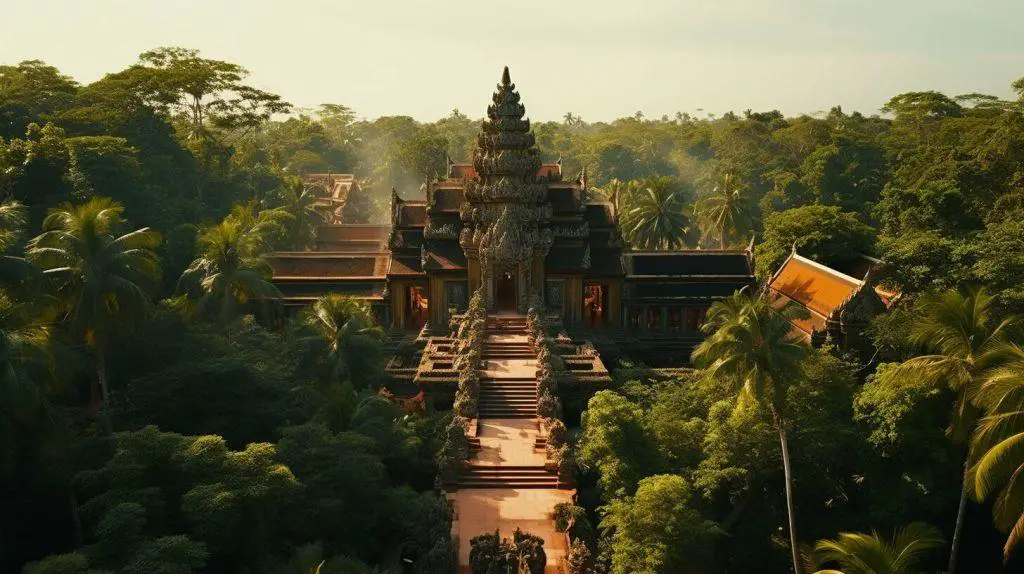
Image source: https://seowriting.ai/32_6.png
Conclusion
Throughout Cambodian history, Buddhism has played a significant role in shaping the culture and society of the nation. From its origins in ancient times to its enduring presence in contemporary society, Buddhism has provided a sense of unity and cultural identity for the Cambodian people.
As explored in this article, Buddhism’s impact on Cambodian culture can be seen in various aspects of society, from art and literature to education and social welfare. Its influence is also reflected in the values and beliefs of the people, promoting compassion, mindfulness, and respect for elders.
The Resilience of Buddhism
Despite facing various challenges throughout history, Buddhism has remained resilient and adapted to changing societal needs and beliefs. From the Khmer Empire to the modern era, Buddhism has withstood periods of conflict and cultural change, remaining an integral part of Cambodian culture.
The Future of Buddhism in Cambodia
As Cambodia continues to modernize and integrate into the global community, the role of Buddhism may evolve and adapt to changing circumstances. However, its enduring significance and influence on Cambodian culture are unlikely to diminish.
Buddhism’s promotion of moral and ethical teachings, its emphasis on compassion and mindfulness, and its role in promoting social welfare and unity will continue to shape the culture and values of the Cambodian people for generations to come.
FAQ
Why is Buddhism Significant in Cambodian Culture? Exploring its Impact
Buddhism has played a crucial role in shaping Cambodian culture and society, influencing various aspects such as art, architecture, literature, festivals, education, and social welfare.
The Origins of Buddhism in Cambodia
Buddhism arrived in Cambodia centuries ago and became intertwined with the country’s history and traditions, shaping the beliefs and practices of the Cambodian people.
Buddhism and the Khmer Empire
Buddhism had a significant influence on the Khmer Empire, adopting it as the state religion and leaving a lasting impact on architecture, art, and cultural practices.
Buddhist Practices and Rituals in Cambodian Society
Cambodian society is deeply ingrained with various Buddhist practices and rituals that contribute to its cultural identity, including meditation, offerings, and traditional ceremonies.
Buddhist Monasticism in Cambodia
Buddhist monasticism holds great significance in Cambodia, with monks playing a central role in education and social welfare, providing moral guidance and support to the community.
Buddhism and Cambodian Art and Architecture
Buddhism has had a profound influence on Cambodian art and architecture, with temples and sculptures reflecting Buddhist beliefs and serving as spiritual and cultural landmarks.
Buddhism and Cambodian Literature
Buddhism has influenced Cambodian literature, with Buddhist themes and teachings often reflected in traditional stories and poetry, highlighting moral values and spiritual lessons.
Buddhism and Cambodian Festivals
Buddhism plays a significant role in Cambodian festivals such as Pchum Ben and Khmer New Year, with celebrations reflecting Buddhist beliefs, rituals, and values.
Buddhism and Cambodian Education
Buddhism has impacted education in Cambodia through the establishment of Buddhist schools and the emphasis on teaching moral and ethical values alongside academic subjects.
Buddhism and Cambodian Social Welfare
Buddhism promotes social welfare in Cambodia through charitable organizations that provide healthcare, food, and shelter to those in need, reflecting the Buddhist principle of compassion.
Buddhism and Cambodian Values
Buddhism promotes values such as compassion, mindfulness, and respect for elders in Cambodian society, shaping the culture, behavior, and relationships of the people.
Buddhism’s Resilience in Cambodian History
Buddhism has withstood various challenges throughout Cambodian history, including periods of conflict and cultural change, remaining a resilient and integral part of the culture.
Buddhism and Cambodian Identity
Buddhism is deeply connected to the Cambodian national identity, providing a sense of unity, cultural pride, and spiritual guidance for the Cambodian people.
Buddhism’s Role in Modern Cambodian Society
Buddhism continues to play a significant role in contemporary Cambodian society, shaping the lives, values, and worldview of the people amidst the influences of globalization and modernization.
Buddhism’s Future in Cambodian Culture
The future of Buddhism in Cambodian culture will likely involve continued adaptation and evolution to meet changing societal needs and beliefs while maintaining its enduring significance.
